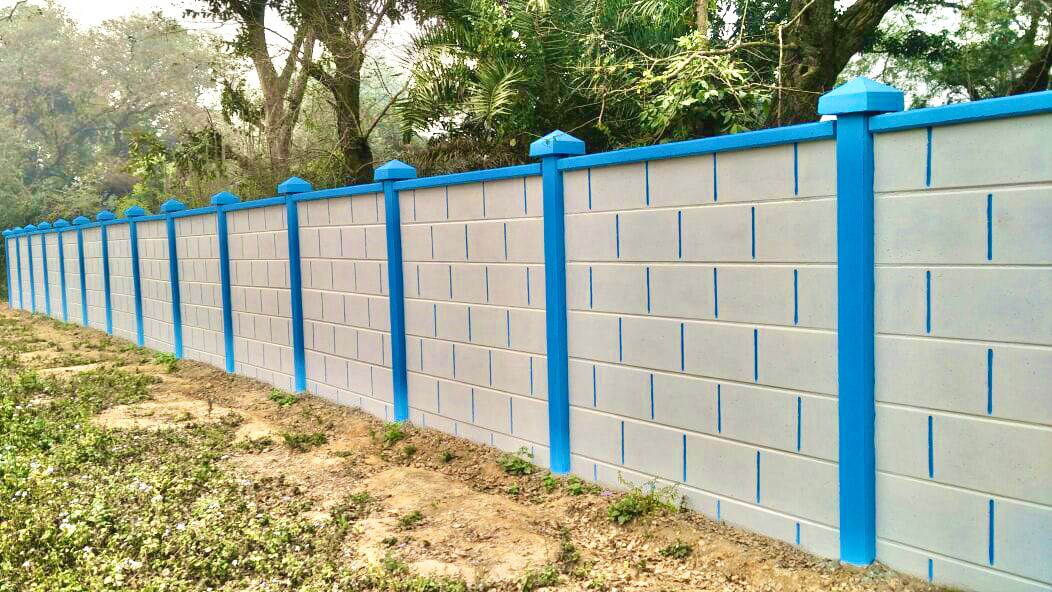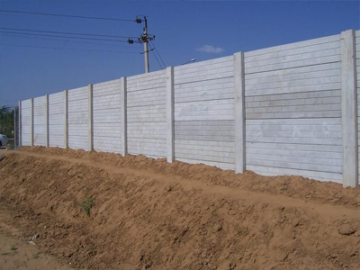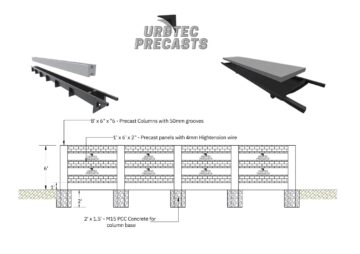- Precast Wall With 4 years Warranty - Urbtec Precasts
- [email protected]
- Precast Wall With 4 years Warranty - Urbtec Precasts
- [email protected]

Traditional Compound Walls
 We manufacture & erect Precast Prestressed boundry walls using our in house manufactured Concrete Panels.
We manufacture & erect Precast Prestressed boundry walls using our in house manufactured Concrete Panels.
Advantages Of Precast Walls :
- Traditional compound walls are made from clay and some heating techniques, its durability depends upon the quality of plaster used while preparation.
- The construction of a traditional wall (around 100mtr) takes at least 7 days to construct and another 7 days for water curing for which we need lengthy installation and hard labor process.
- In terms of materials and construction processes, the traditional brick wall construction is very expensive.
- The traditional brick walls are not as strong as precast compound walls its 150mm thick brick masonry can be easily broken with ordinary hand tools.
- If brick walls are constructed in the regions where there is a moist climate, they can easily get damaged by that kind of climate.
- In case of any failure during construction, we need to create almost a new compound.
- The traditional brick wall’s long-lasting property depends on the quality of the thickness, quality of sand, and the art of workmanship, which makes it weak in nature.
Design-Build Efficiency
Precast concrete offers an efficient delivery model for your project; allowing building construction to proceed while the design is developed.
Reduced Costs
Precast concrete walls are manufactured off-site, under roof and are delivered ready to install when needed. This innovative process compresses project schedules, reduces safety concerns, reduces site disruption and reduces overall project costs by requiring fewer trades for construction and fewer people on site.
Environment Resistant
Precast concrete walls provide superior resistance to fires, natural disasters, insects and mold. Like no other building material, its resistance to rain, wind damage, earthquakes, termites and decay provides lower maintenance and insurance costs. It can also withstand many winters of freeze-thaw cycles better than other building materials.
Thermally Efficient
Costs associated with heating and cooling can be greatly reduced through concrete’s thermal mass benefits. Reduced peak heating and cooling loads can be achieved because concrete reacts slowly to changes in outside temperature.
Low Maintenance
The exterior of a precast concrete walls can be left unpainted without damage from the elements. If painting is desired, repainting is needed only every five to ten years. Precast concrete interiors are less subject to damage and easier to wash.
Sound Control
Because of concrete’s density, precast buildings absorb sound making it an ideal choice for commercial and residential buildings.

